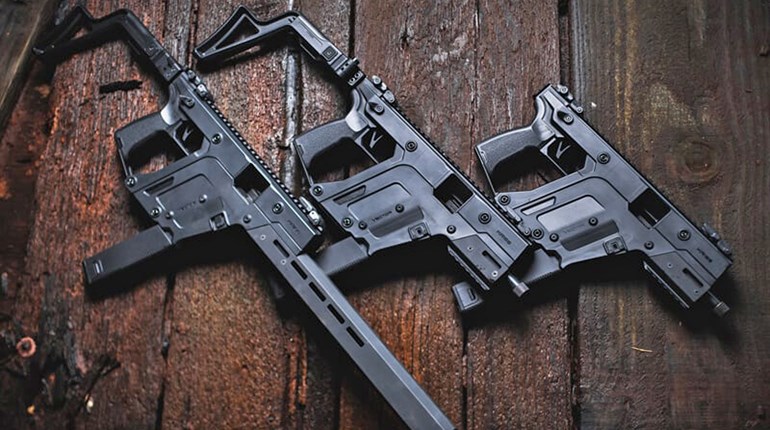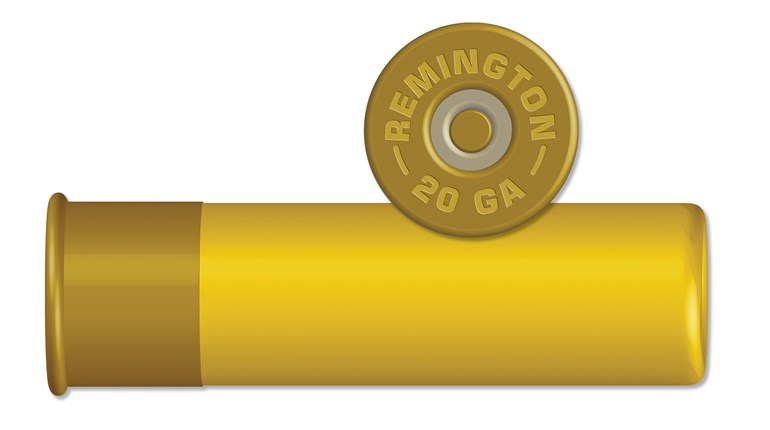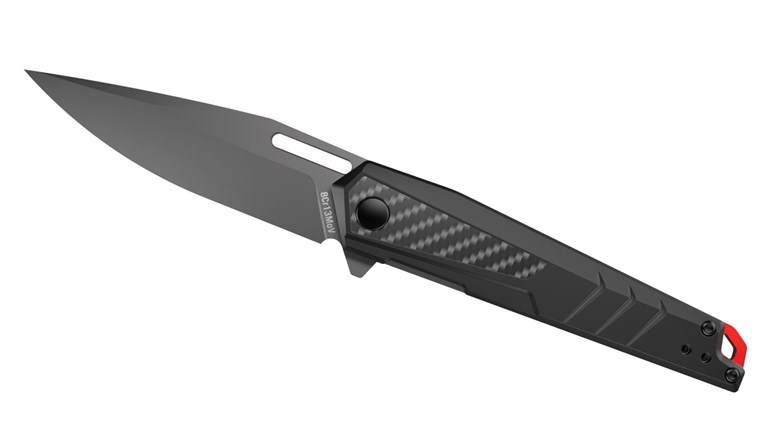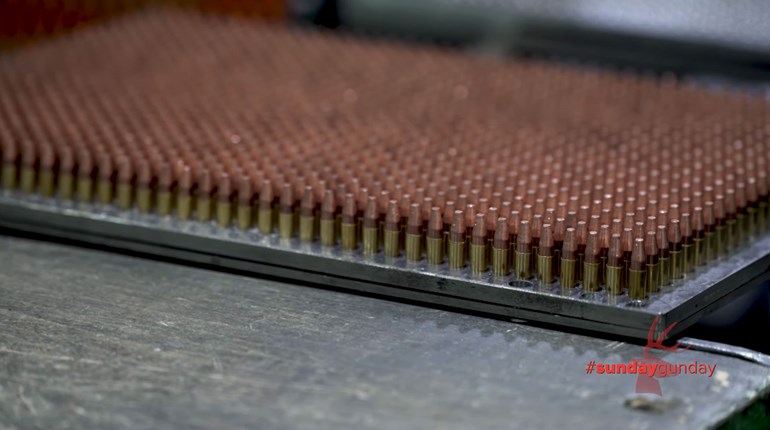
SIG Sauer’s latest entry into the carry-gun market comes to us from the 1970s. OK, not entirely, but those long familiar with the Swiss company’s products fondly remember the P225. It was (and is) a compact, single-stack, traditional double-action/single-action (DA/SA) that evinced excellent quality and gained a good bit of popularity back in the day. Now, it’s back, with some updates you’d expect, but with “well enough” left alone, too.

The First Time Around
While many regarded the P225 as a smaller, slimmer version of the company’s wildly popular double-stack P226, the P225 was actually a reduced-size version of the .45 ACP P220 chambered in 9 mm. Its claim to fame, though, was its adoption by the West German police as the P6. That was a strong endorsement which solidified the reputation of the handgun in the minds of American shooters.
So, why then did SIG phase it out? Well, not because there was anything wrong with it, but because there was so much else right with SIG’s lineup. It had the aforementioned P220 for big-bore fans and the P226 for aficionados of full-size, double-stack pistols. Then a double-column compact with dimensions otherwise similar to the P225—the P228—was released (and embraced by the U.S. military as the M11). Further, a similarly sized single-column compact, the SIG P239, arrived on scene. It wasn’t really that much smaller than the P225, but looked it, and was “swoopier,” with graceful curves and sleek styling. Finally, refurbished surplus police pistols from Germany started arriving on the U.S. market. Given that those who desired a P225 could and would often make do with a second-hand P6 (which had some differences, most notably a heavier trigger pull), SIG chose to remove the P225 from its product line.

Reintroduction
While it is unclear exactly why SIG chose now to reintroduce the P225 as the P225-A1, we can speculate. The concealed-carry market has exploded since the P225 left the stage. The platform is still more than viable, so why expend R&D on an entirely new pistol? Further, the 9 mm is seeing a resurgence in popularity due to the FBI’s decision to return to it as the agency’s standard chambering. Additionally, by reintroducing an established pistol, SIG makes life easier for accessory makers, who already have the necessary molds, dies and tools, if not finished stock. Lastly, many SIG devotees feel the P225 fits their hand better than the P239 and lamented the former’s demise.

Tweaked, Not Reimagined
Having said that, know that there are differences between the P225 and the P225-A1, but they are subtle. The new gun incorporates a machined-stainless-steel slide rather than the stamped-steel part used on the earlier version. This adds strength and permits the pistol to operate safely with hotter loads. The hooked trigger guard, positively de rigueur in the ’70s, is gone in favor of a handsomely contoured guard. Also, the juncture of the frame and trigger guard is now radiused or “cut high,” allowing the gun to sit deeper in the hand. The plastic grips of the P225 have been supplanted by G10 panels embellished with SIG medallions. The most-significant technological change is SIG’s inclusion of its Short Reset Trigger (SRT), allowing you to send lead downrange a bit quicker. That’s it. Otherwise, the new pistol largely looks and feels like the old pistol—and that’s not a bad thing.

Non-issues
The few complaints about SIG pistols have never really been problems as much as they’ve been hotly debated matters of taste. First and foremost is the traditional DA/SA trigger. The transition from the initial long, 12-pound, double-action pull to subsequent short, 5-pound, single-action pulls is hopelessly deleterious to accuracy, or so claim 1911 proponents and, now, striker-fired pistol advocates. Moreover, SIGs have a high-bore axis, meaning the pistol doesn’t sit deeply in the hand, inducing muzzle flip while reducing control. Add to that the fact that SIGs have uniquely located controls and—to hear critics tell it—the whole system is nigh unworkable. Unless, of course, you actually try it.
The long, heavy initial pull is a pain in the butt; don’t get me wrong. But it is workable, just as it is on a DA revolver. It does take practice, though. And, from a safety standpoint, it’s reassuring. The transition to SA isn’t nearly as bad as some make out. The real problem is you tend to rush the initial shot in order to get to SA trigger mode.

Yeah, SIGs do have a high-bore axis, but I find it’s more of a theoretical problem than a practical one. Because of the pistols’ excellent ergonomics, the muzzle rises but then levers down very quickly. I find I can get off aimed shots from a SIG as fast as I can with practically any other carry pistol.
As for the control locations—learn your gun. Yeah, if you regularly run a Glock or 1911, a SIG—briefly handled—is going to upset your muscle memory a bit. However, if you commit to the platform, it will quickly become natural to you.
The P225-A1 in Particular
Speaking of controls, the P225-A1’s are excellent; typical of the entire P series. The slide release is located far back on the left side. Ahead of it is the decocking lever, which allows you to return the pistol to DA mode without having to touch the trigger or hammer. Above the trigger is the disassembly lever. With the gun unloaded, rotate it into a crescent cut-out in the slide to remove the slide from the frame. P-series disassembly and maintenance are quite simple.

Our sample came equipped with three-dot tritium night sights. The square post-and-notch arrangement provides a good sight picture in daylight, too. The rear sights have a squared profile as preferred by some trainers as they allow you to rack the slide one-handed against your belt or other object should the other hand be disabled or occupied during a fight.
The serrated hammer spur struck the right balance of being unobtrusive, yet quickly accessible, should you have time to thumb-cock the gun before firing. That’s something people sometimes forget about these pistols—they’re DA but can be fired SA if the situation permits or dictates.

One feature notably absent on the P225-A1 is an accessory rail. It’s not as big a deal as you might think. A lot of shooters don’t favor gun-mounted lights, not wanting to aim at or near a target they have not yet identified. Many like having a separate light that can be used just for illumination at those times when drawing a firearm is not appropriate. As for lasers, LaserMax has never stopped making its excellent internal guide-rod laser for the P225. And since the P225-A1 has removable grip panels, I imagine Crimson Trace could produce Lasergrips for it if there were sufficient demand.
Sized Right
I divide carry guns into two categories: pocket pistols and belt guns. Pocket pistols need to be as small and light as practical. I find about 15 ounces unloaded to be the maximum I can carry in pants of a heavy fabric. Lightweight fabrics require an even lighter gun. Belt guns, though, can be considerably larger and heavier since you have to wear a concealing outer garment (a jacket, long vest or untucked shirt) anyway. Many of the new belt-carry guns on the market seem not to have had this considered in their design. Too big for a pocket, they’re needlessly small for a belt. The P225-A1, however, is sized just about perfectly in that regard.

The gun is compact, but the muzzle is long enough for a good sight radius, steady balance and decent muzzle velocity. Also, the P225-A1 exhibits no whippiness, despite handling quickly. The grip is generous and comfortable, even for large hands but—accommodating only a single-stack, flush-fitting magazine—it is not too large to conceal easily.
On the range the P225-A1 could best be described as unremarkable—by SIG standards. Early on, there was a single failure to feed and the slide didn’t consistently lock open after the last shot. Neither problem recurred after the gun had been shot for awhile. It was accurate, comfortable and controllable. Controls functioned crisply and reliably. Operationally, the gun is refined to the point of simplicity.
Maybe it’s the single-column magazine, but the P225-A1 carries very well, certainly as well as more capacious polymer-frame pistols, despite its aluminum-alloy frame.
On the whole, the new P225-A1 is a very nice pistol, actually superior to the original. It has a stronger slide, more comfortable grip frame, updated trigger guard design and shorter trigger reset, all without sacrificing any of the earlier pistol’s virtues. The platform is back, it’s better and the time is ripe.








































